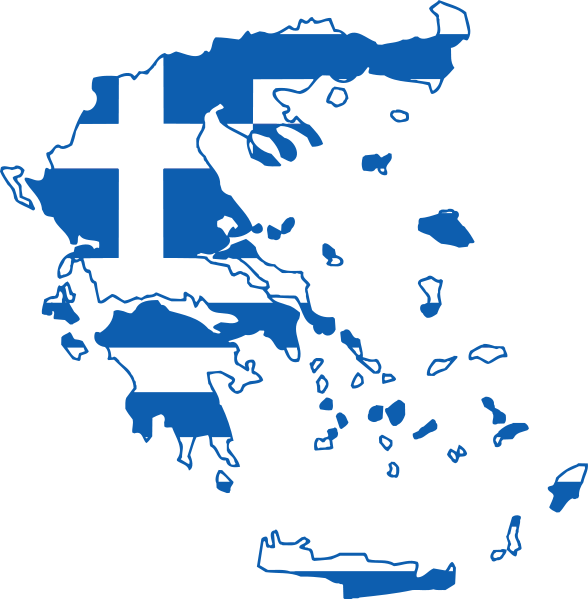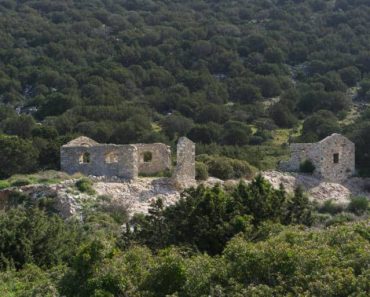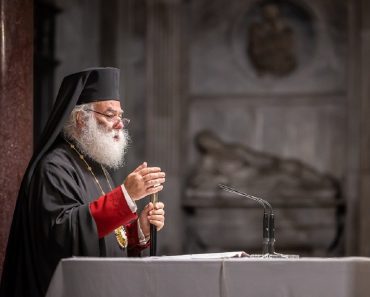A significant archaeological discovery has emerged from the village of Chiliomodi in Corinthia, where a Hellenistic-era tomb structure—reminiscent of Macedonian tombs—has come to light for the first time. The find was made during systematic excavations conducted under the “Ancient Tenea” research program, which concluded in October 2024.
According to a statement from the Greek Ministry of Culture, the tomb structure is notable for both its architectural design and the wealth of finds it contained. Shaped like an asymmetrical “T,” the structure comprises two main sections: a narrow access corridor measuring 2.80 by 1.20 meters and a rectangular burial chamber measuring 2.75 by 7.40 meters.
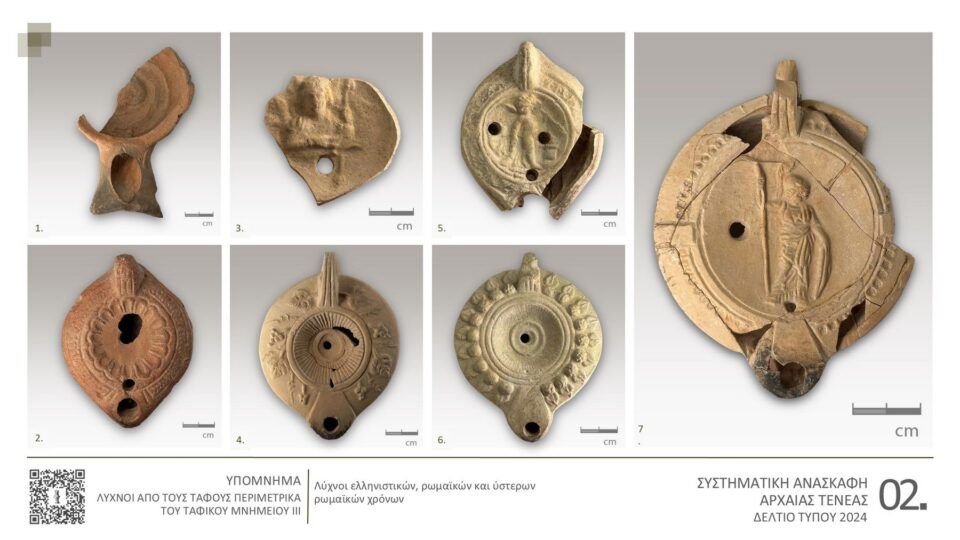
Hellenistic, Roman and late Roman lamps / Photo Credit: Hellenic Ministry of Culture
The entrance to the chamber was sealed with a rectangular cover slab. Inside, archaeologists uncovered six burial features—one monolithic sarcophagus and five built rectangular graves. Only the sarcophagus contained a relatively undisturbed burial, likely that of an adult woman. The other graves held disturbed human remains, while two still had covering slabs, albeit broken.
A notable aspect of the discovery is the large quantity of animal bones, including those from domesticated species, and a turtle shell found both inside the sarcophagus. A thick layer of animal bones was also found inside the tomb structure itself, as well as in the surrounding fill. These elements, along with ceramic fragments dated to the 5th and 6th centuries CE, suggest long-standing ritual activity connected to healing cults.

Coins and other artifacts where found in the tomb structure / Photo Credit: Hellenic Ministry of Culture
Notable finds include a gold ring with a semiprecious stone seal depicting Apollo with a healing serpent, two gold danakes replicating Hellenistic coin types from Sicyon, a votive clay finger, gold wreath leaves, miniature Hellenistic vessels, a silver tetrabolon of Philip III Arrhidaeus, iron strigils, a small iron dagger, bronze decorative items, glass beads, bronze spoons, and various types of perfume bottles.
The unexcavated area surrounding the tomb structure has yielded important findings, including a north-south oriented stone-paved road east of the entrance and a 6.50 by 4.10 meter section of an enclosure wall to the north.
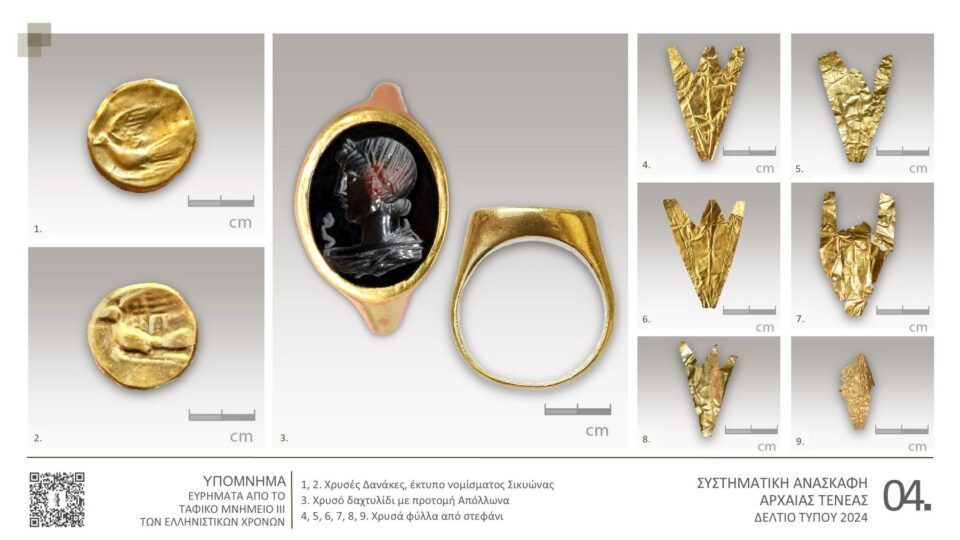
Gold leaf from a crown, gold coins and a gold ring where found in the tomb structure / Photo Credit: Hellenic Ministry of Culture
According to the Hellenic Ministry of Culture, the tomb structure appears to have remained in use for burials until the 4th century CE, after which it was sealed. By the 6th century CE, the tomb structure was broken into through its roof, and the graves were looted. In later use, the structure served as a site for perideipna—ritual meals held in honor of the dead.
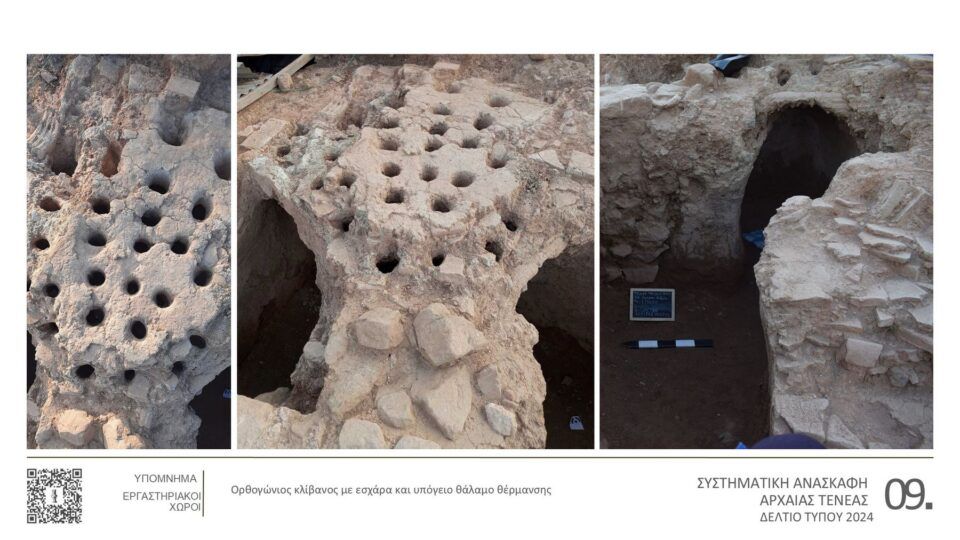
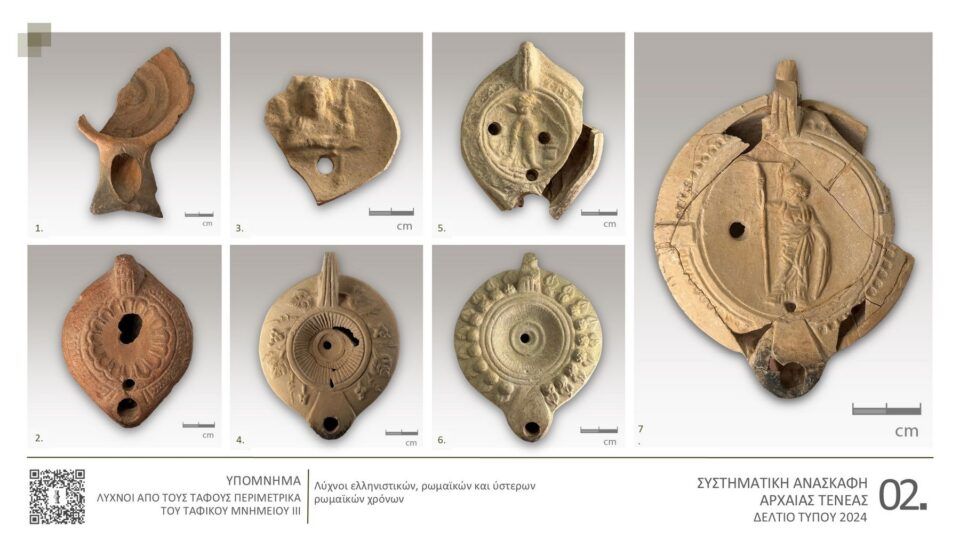
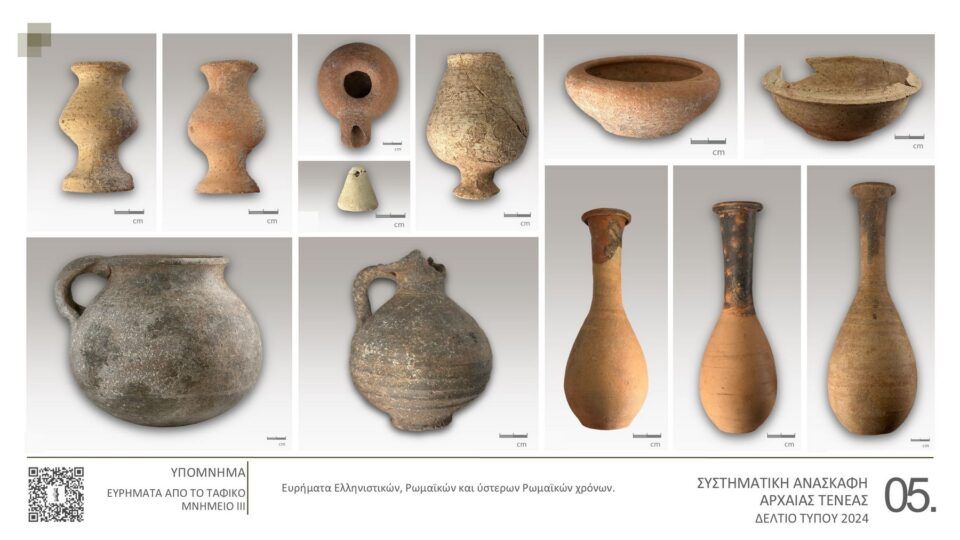
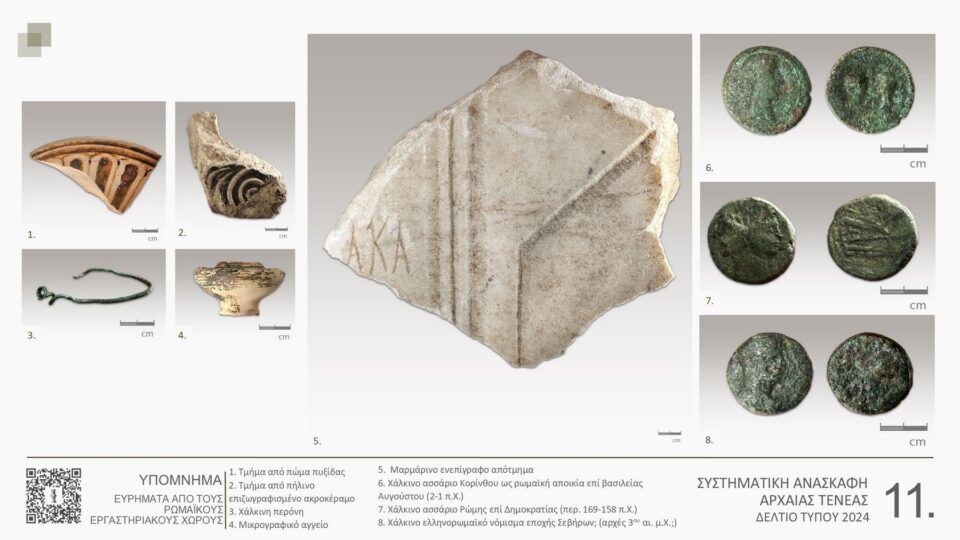
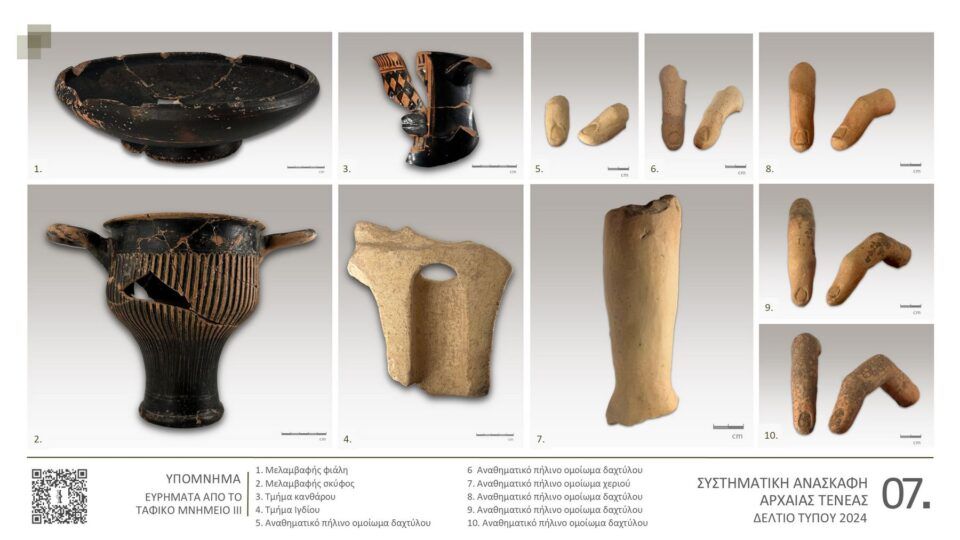
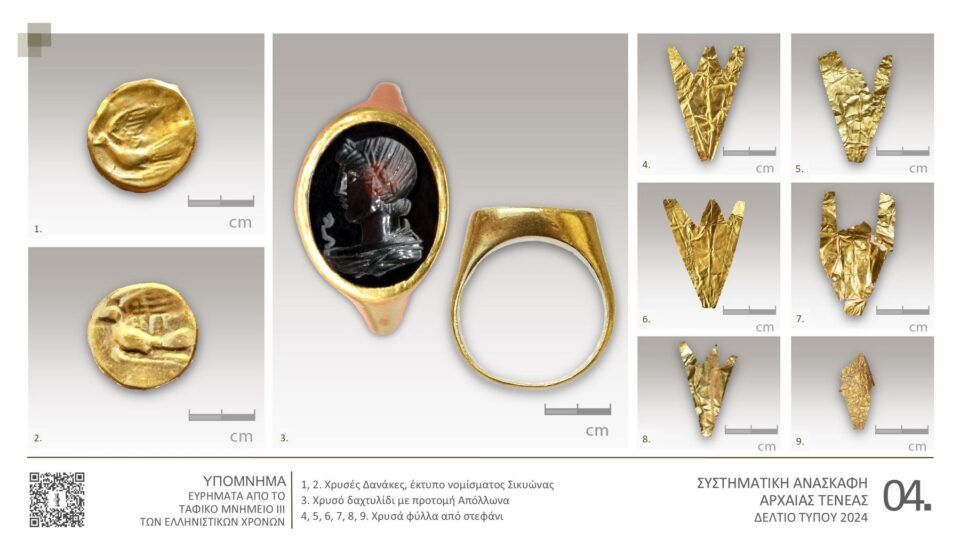
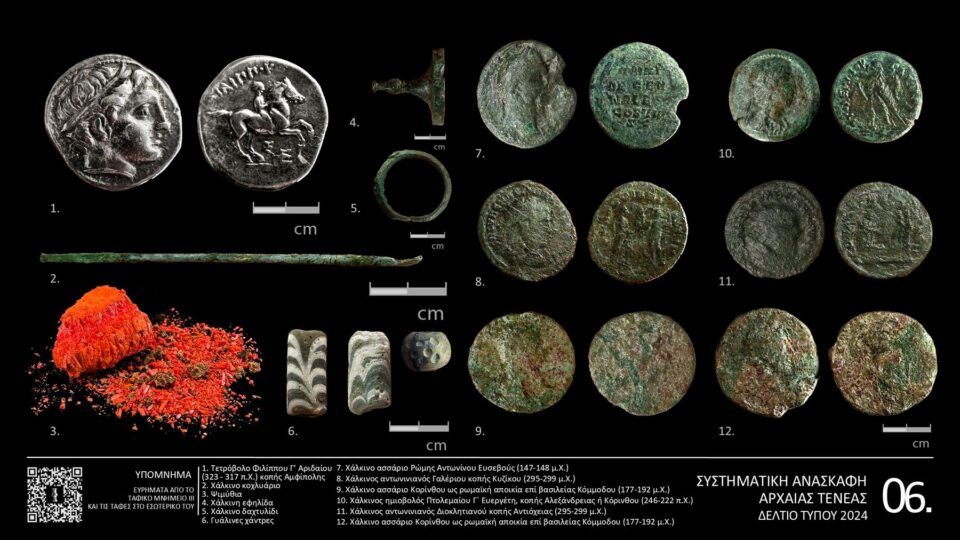
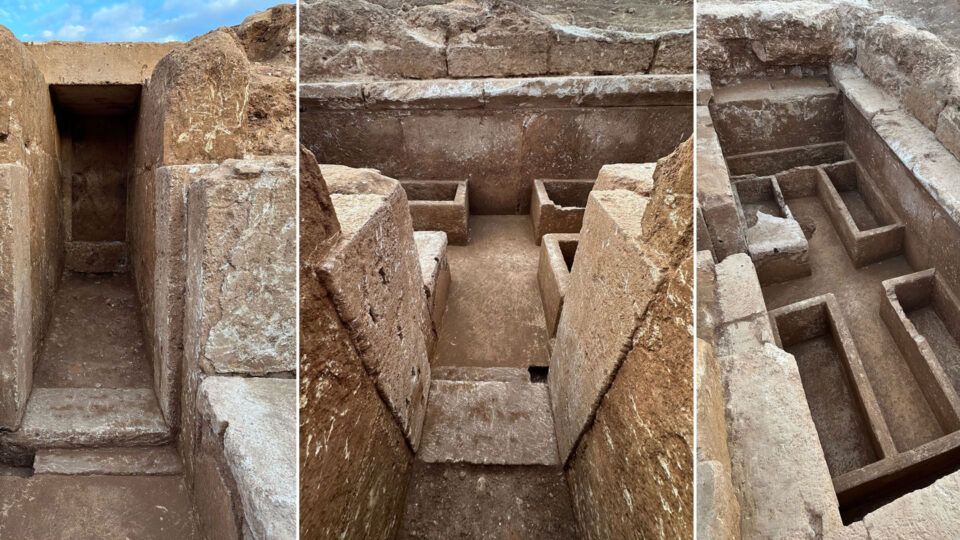
Cover Photo: Hellenistic Tomb Structure of Corinthia / Photo Credit: Hellenic Ministry of Culture
